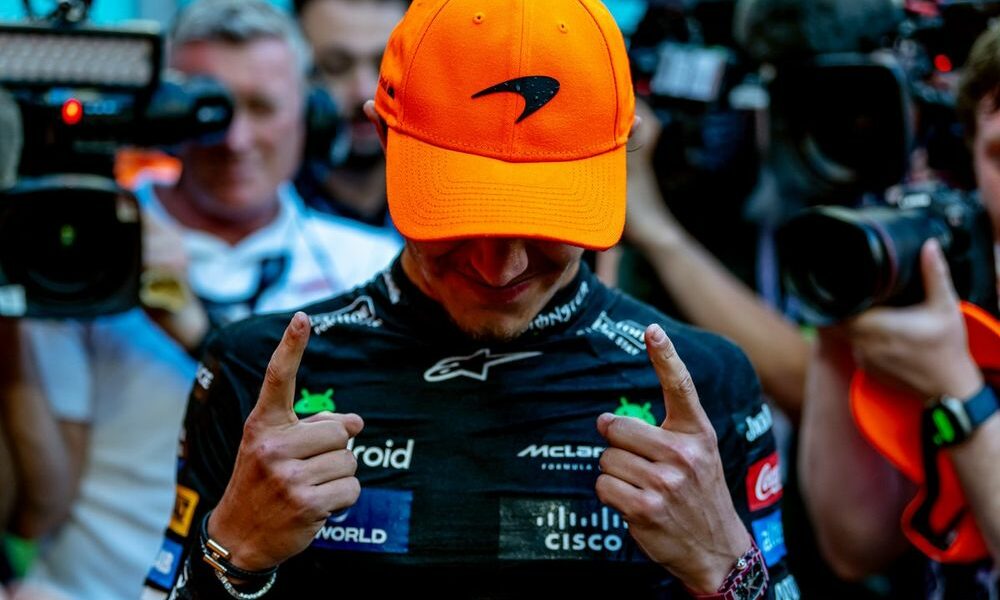Prior to Formula 1’s third visit to the Hard Rock Stadium, nobody other than Max Verstappen had won a Miami Grand Prix. And it was set to be the same again, as the irrepressible Dutchman took victory in the sprint race and claimed pole position – albeit by just a tenth – which he seemed certain to convert.
The course of the race’s events were changed irrevocably by the fleeting contact of two bits of tyre matter. Kevin Magnussen‘s racing equivalent of ‘leaving a foot in’ with his challenge against Logan Sargeant for minor placings fired the American into the Turn 2 barrier and sounded the clarion call for a safety car.
Lando Norris, who had yet to make his first stop and had gone long, was the primary benefactor. Owing to the timing of the safety car, his eventual switch to the hard tyre effectively came for free and ensured he retained a lead over Verstappen. But we’ve been here before: Verstappen usually finds his way through, and it was that conditioned sense of inevitability that made the final 20 laps so compelling. But the threat of a challenge seemed to evaporate, and Norris kept building a lead that proved more than enough to claim a first F1 win.
The 2024 Miami Grand Prix will forever be “that first Norris win”, but there was far more to it than that. Indulge us, if you will, as we pick our way through the 10 biggest talking points from Florida.
1. Norris can finally put “No-Wins” epithet to bed
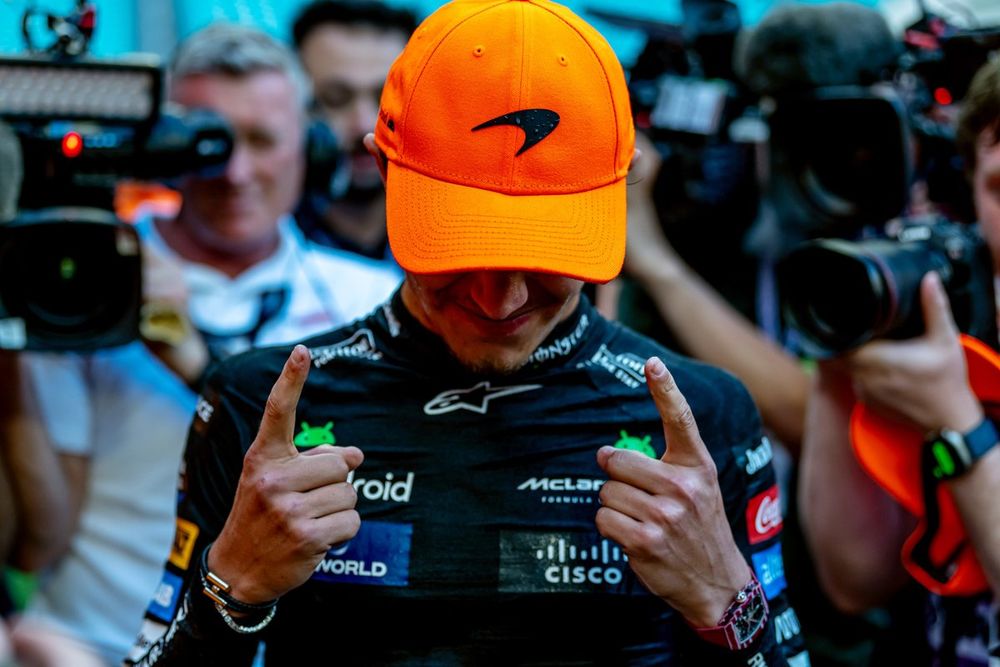
It has been a long time coming, but Norris is finally a grand prix winner
Photo by: Michael Potts / Motorsport Images
It was the result that dispelled The Ghost of Sochi 2021.
McLaren and Norris had never been allowed to forget the precipitous downpour that produced their collective fumble on that day in Russia, particularly as the agonising wait for retribution had lingered far beyond anything that the team had anticipated. Difficulties in its early interpretations of the 2022-spec regulations suggested that Norris had been too loyal to McLaren, especially when 2023’s awful start came to bear. It seemed like he’d missed the boat.
Under the guidance of Andrea Stella, McLaren has turned the ship around. Equally, Norris kept himself in the game in Miami; an early phase of tyre saving ensured that the Briton could extend his stint, which ultimately yielded the safety car-assisted pitstop on lap 29 that kept him ahead of Verstappen.
PLUS: The three factors that mean Norris’s Miami F1 win can’t be cast as a safety car fluke
The two drivers were evenly matched in the second and third sectors, barely separated by 0.1s through those splits each lap, but it was the opening sector where Norris could focus on his break-building. He was usually 0.3s faster than the Red Bull driver in the opening array of corners, which kept their interval timings steadily growing by each lap, and precluded Verstappen from mounting any kind of fightback during the race’s second act.
Thankfully, Norris’ win will now quell the Twitter comics, at least those who noticed that “No-wins” is vaguely similar to “Norris”. That said, as we speak, many are now arguing that “no-wins” is a pluralised in some Aston Martin-esque questioning of the Official Witty Repartee Rules and Regulations, so that they don’t have to come up with a new nickname.
2. McLaren keeps upgrade hit rate as Miami package works out
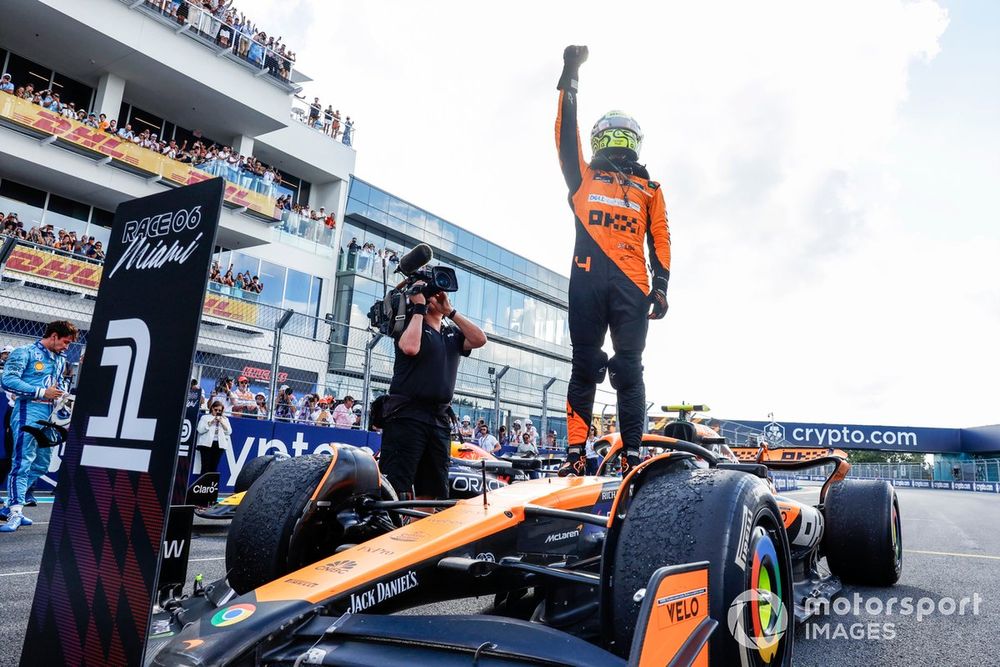
Norris celebrates on top of his upgraded MCL38
Photo by: Steven Tee / Motorsport Images
On race pace terms, McLaren can make a genuine claim that it had the fastest chassis in Miami. Norris waltzed away from Verstappen, while Oscar Piastri relegated the Ferraris by a position through an explosive start to the grand prix. That’s a huge turnaround over the past 12 months, at the start of which the team was lucky to even score points.
Ever since Zak Brown entrusted the keys to the erudite Stella, the team’s fortunes have only progressed; a clear philosophy in the technical department’s direction has ensured that upgrades have been continual despite the cost cap’s restrictive effects.
Upgrades don’t always work for a variety of reasons: perhaps the correlation between wind tunnel and the real world isn’t particularly strong, or a team’s turbulence models aren’t advanced enough, or reliability has been hampered in some way. In McLaren’s case, however, it seems that upgrade packages will bring tangible performance benefits without fail.
The Austria bolt-ons last year turned the season around, and further additions in Singapore helped keep pace with the other frontrunners. In pure lap-time terms, McLaren lost a little to Red Bull at the start of 2024, but that was because Red Bull had long since stopped developing its 2023 machinery and saved the bigger steps for the new car.
For the Miami round, McLaren brought a wide-ranging suite of aero updates to its MCL38, including a new front wing, front suspension, sidepod inlets, floor, and rear wing geometries. Norris got the full kit while Piastri had half of it, giving the team a chance to perform back-to-back tests, but it was impressive to see that the team got the new aero dialled in with just a single practice session. With more time to explore the changes in Imola, can McLaren extract even more?
3. Verstappen’s lack of pace down to hole in floor…or was it?
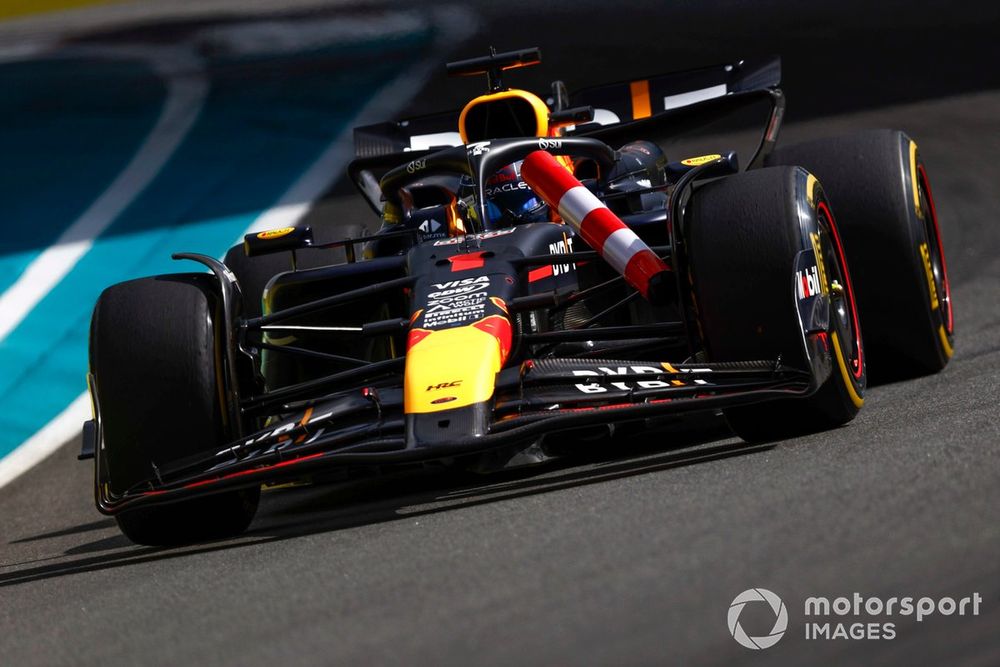
Verstappen’s unwanted passenger saw him also pick up car damage
Photo by: Zak Mauger / Motorsport Images
Those expecting Verstappen to put Norris under scrutiny on the lap 33 race restart probably figured that the race was over when the Dutchman threw a speculative attack into the first corner, but Norris saw the championship leader coming and shielded himself against any further efforts into the next corners.
It was like watching the knight defend the Holy Grail at the end of Indiana Jones and the Last Crusade; Verstappen (the grail knight) swiped once, was evaded by Norris (Indiana Jones), and then rather fell over under the weight of his own sword. Norris continued to pad out his lead over the final 20 laps – a tenth here, a couple of tenths there – as insurance, which ultimately proved excessive at the flag.
But why couldn’t Verstappen close the gap? The driver himself reckoned that his RB20 struggled to extract much in the way of grip from the hard compound tyre; the stint on the mediums had been satisfactory, but the white-walled C2 did not mesh with the Red Bull’s Miami set-up.
Even though he reckoned that his lap 20 bollard-bothering antics had not caused any damage, team principal Christian Horner reckoned that the liberated road-side marker had “done quite a lot of damage to the underside of the car.”
“We will have to look at exactly what the effect of that was. It is a reasonable amount of the area around the left rear floor,” Horner said. “There is a reasonable amount that’s missing and you can see it awfully flexing as well, so it certainly wouldn’t be helping.”
4. Leclerc doesn’t need practice sessions to grab podiums
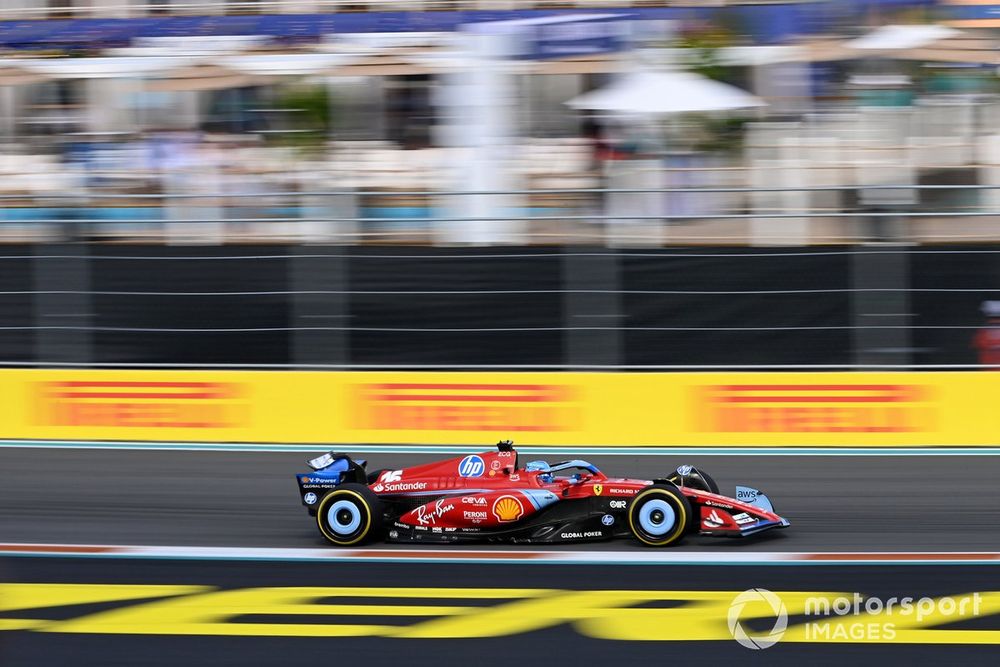
Leclerc effectively sat out practice after an early spin
Photo by: Mark Sutton / Motorsport Images
Two and a half laps was all she wrote for Charles Leclerc’s practice running in Miami. A languid spin out of the Turn 14-15 chicane put the Monegasque’s blue-tickled Ferrari the wrong way around, and it proved difficult to perform a recovery pirouette given the tightness of the walls at Turn 16. Thus began the references to the first film in the Austin Powers franchise, when Mike Myers’ snaggletoothed British spy parody attempts to perform a 4000-point turn, but Leclerc’s efforts did not last as long. He overheated the clutch and couldn’t engage reverse, forcing him to clamber out of his car.
Minimal preparation before sprint qualifying proved no obstacle, however, as Leclerc plonked his car on the front row of the grid and kept Verstappen somewhat honest throughout the 19-lap race to claim second. His form continued into the full grand prix and again clinched second on the grid, although the interloping McLarens appeared to have an edge on race pace over the Ferraris.
Although Leclerc reckoned that Ferrari might have enjoyed a veneer-thin tyre advantage over Red Bull in Miami, judging by his post-sprint comments, he wasn’t able to entirely keep pace with Verstappen at the start. This let Piastri trickle past and stunt the Ferraris’ progress early on into the race, although Leclerc’s earlier stop ensured that he could undercut the Australian for the race’s second half.
Race weekends have been compromised before by limited practice, but Leclerc shook that off and performed when it mattered. And all of that while his drinks bottle wasn’t working…
5. Sainz’s assertive radio traffic isn’t always right
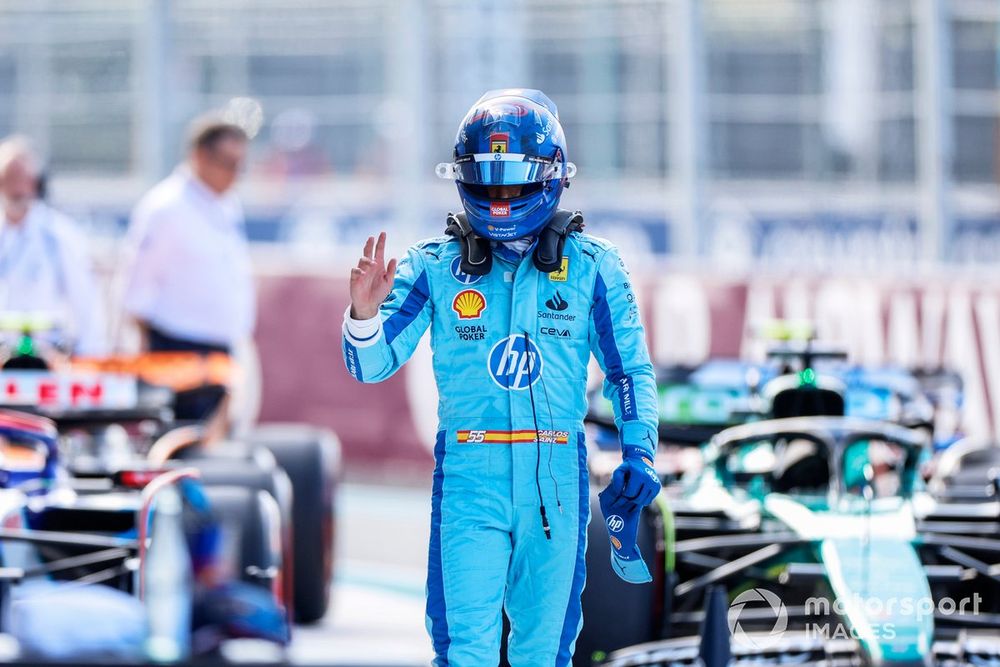
Sainz made a couple of wrong strategic moves in Miami
Photo by: Steven Tee / Motorsport Images
The radio traffic emerging from Carlos Sainz‘s car is usually chock-full of insights, ranging from the strategic to the ‘brave’ renditions of Sade’s 1984 hit Smooth Operator. This weekend, the radio waves were an insight into his frustration, which belied his usually calm demeanour as he hit out at a close-quarters battle with Piastri.
Sainz attempted to hang his car around the outside of Piastri at Turn 11, a move that the Australian repelled but also left Sainz to take to the run-off. It was a robust defence and one that the stewards ultimately proved to be happy with, but Sainz tasked his engineer Riccardo Adami with getting McLaren on the blower to get Piastri to give the place up. McLaren ran Piastri through its own series of events, perhaps worried that the Melburnian’s laid-back nature might not be assertive enough in pleading its case, but it never came to that.
Frustrated by the decision (one that probably led countryman Fernando Alonso to assume it was down to being Spanish), Sainz gave Piastri little quarter in their future battles, which led to contact at Turn 17 that killed off Piastri’s podium hopes. After going a bit long into the tight left-hander, Sainz gave Piastri nowhere to go and nibbled at his front wing, forcing the McLaren driver to make a stop.
For someone who’s usually spot on with his tactical talk, Sainz showed a few lapses in his judgement in Miami; dictating strategy is one thing, but it’s best to leave the penalty lobbying in the pitwall’s hands.
6. Alpine’s upgrades show progress as Ocon gets first 2024 point
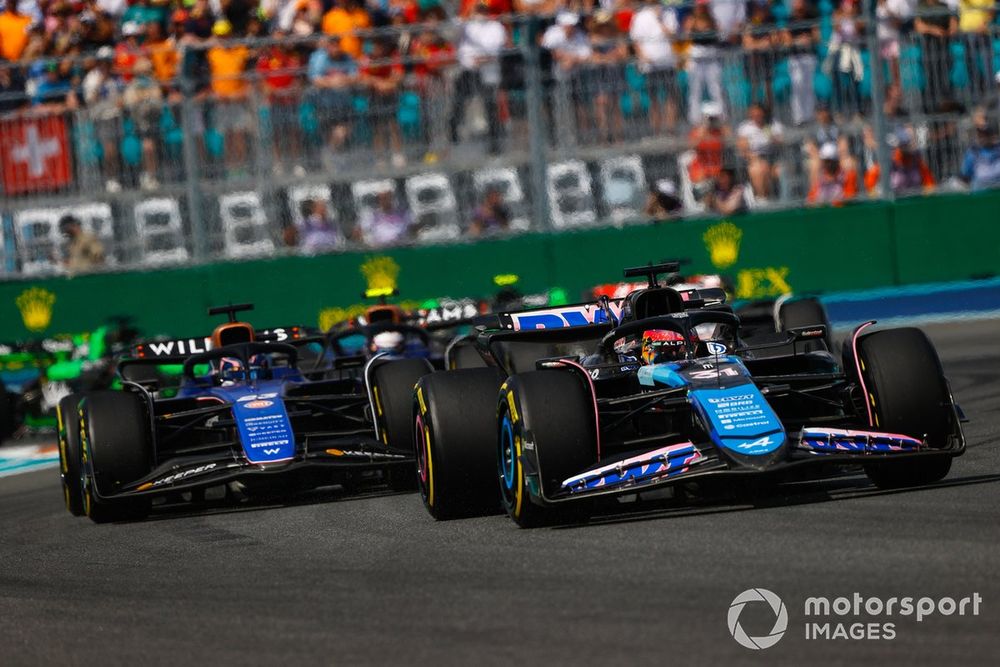
Ocon’s Miami point lifts Alpine above Williams and Sauber in the standings
Photo by: Andy Hone / Motorsport Images
Now that Alpine has shed about 10kg off its A524, the car is now operating at the weight limit for the first time this season. Although the team still has a way to go to be considered competitive, it now sits above Williams and Sauber in the constructors’ championship thanks to Ocon’s points-scoring exploits in Miami.
The Frenchman survived a robust onslaught from team-mate Pierre Gasly on the opening lap, although it did cost Ocon two positions. Gasly wanted to be the driver on the “optimum” strategy as, per his words, the lesser-placed driver would have to take the Hail Mary strategy in the event of a safety car and go long. Ocon was thus saddled with the latter option, but it worked out perfectly when it came to the bollard-enforced virtual safety car period.
Once everything had cycled out post-safety car, Ocon had shuffled up to ninth and spent a good while keeping former team-mate Alonso at bay to maintain the two points on offer. The veteran Spaniard eventually found a way past on the run to Turn 11, scything ahead to put Ocon down to 10th, but it nonetheless got Alpine off the mark in a difficult 2024 thus far.
“We don’t want to be jumping around and celebrating too hard,” Ocon said afterwards. “Obviously, it’s only a top 10. But considering where we were a couple of races ago in Bahrain, 19th and 20th, I think, you know, we can take the positives out of this race and the baby steps that we are doing at the moment. But it definitely feels good to come out of this weekend with some reward.”
7. Potential Red Bull exodus not yet headed off after Newey exit undefined
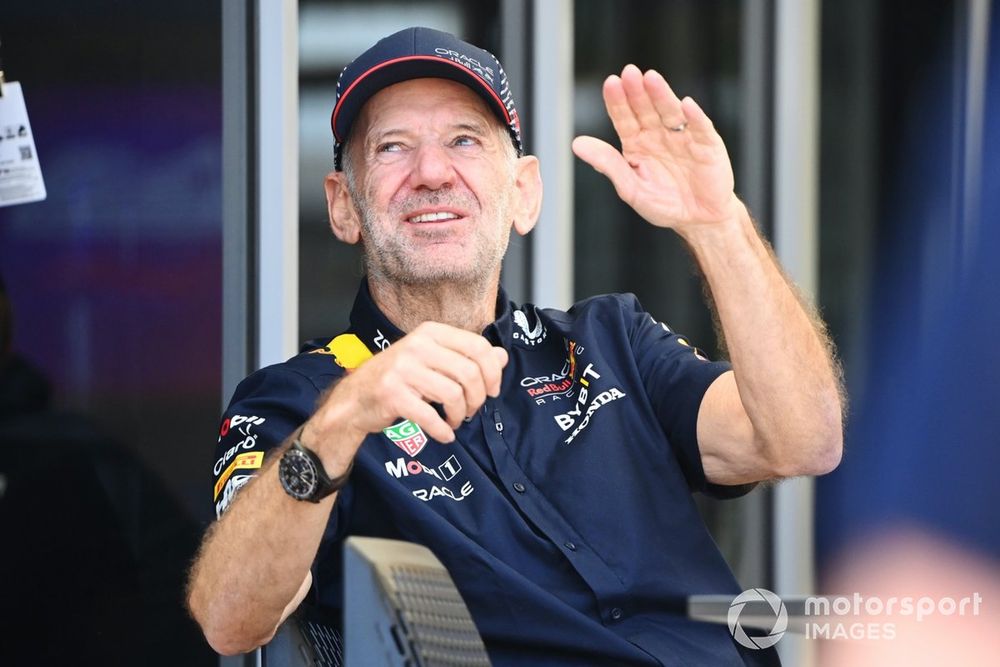
Newey is waving goodbye to Red Bull in early 2025
Photo by: Mark Sutton / Motorsport Images
The 2024 season has been pretty prolific in its bombshell news stories thus far, and Adrian Newey’s confirmed departure from Red Bull in 2025 is just another storyline in F1’s microcosmic soap opera. The whys, wherefores, and what’s nexts have been digested in terms of Newey’s future employment – but the ramifications for Red Bull will take longer to fully understand.
The departure of Newey will at least clarify his involvement in the car design over the past few seasons. Should the Milton Keynes team remain F1’s top dog, then the likes of Pierre Wache, Ben Waterhouse, Enrico Balbo and co deserve their flowers. If not, then Newey’s star continues to twinkle as brightly as it did 25 years ago. He won’t be involved in the team’s 2026 design, so we’ll only find out then.
PLUS: How big a blow is Newey’s exit to Red Bull?
Furthermore, will anyone follow Newey out of the exit door? McLaren CEO Brown predicted that “more dominos” would fall, citing an increase in CVs on his desk from Red Bull employees. Verstappen looks set to remain at the team, even if Mercedes would like to find a way to spring him from his current deal. Instead, reports are that sporting director Jonathan Wheatley is casting his net out for a possible team principal opportunity, while Wache has been linked to Ferrari more than once over the past couple of years.
Red Bull is currently in the process of revisiting its current contracts to keep its key players at the team, having already locked down Balbo and Waterhouse in recent months.
8. Newey courted by Ferrari, Aston Martin… and Williams
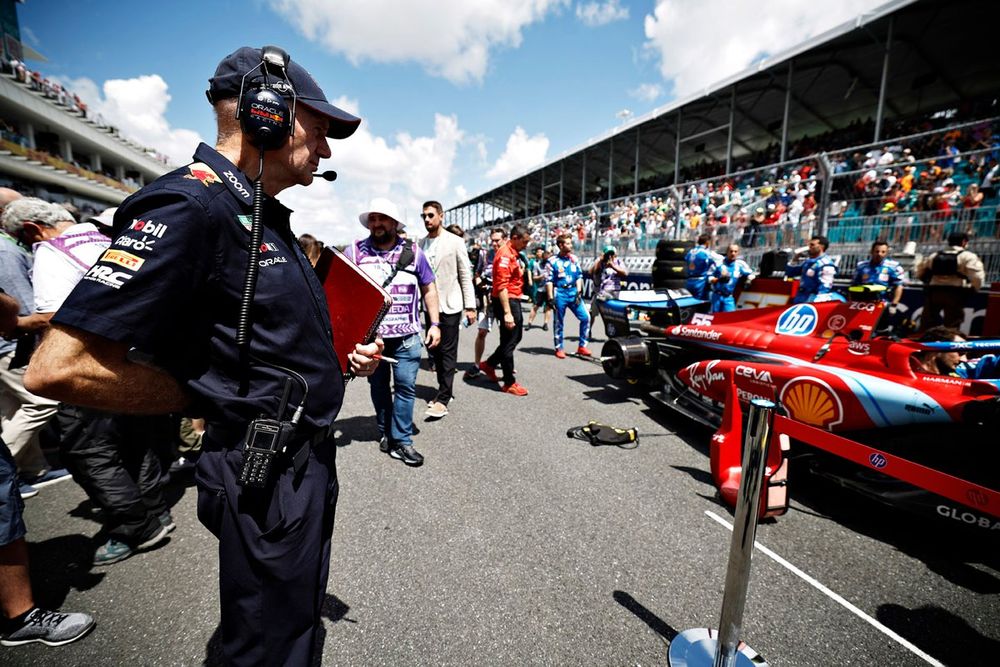
Would Newey look good in red?
Photo by: Red Bull Content Pool
When Newey’s departure was announced, the most compelling destinations appeared to be either Ferrari or Aston Martin. At Maranello, Frederic Vasseur is attempting to build a Ferrari team comparable to that of the early 2000s and return the Prancing Horse to the field’s forefront – and Newey might be viewed as a shortcut to that level of success.
In the meantime, Aston Martin has grand ambitions and financial security from owner Lawrence Stroll, who is believed to have tabled a large offer for Newey’s services. McLaren and Mercedes are understood not to be interested, preferring to stick with their own philosophies, so it seemingly comes down to whether Newey wishes to relocate to Italy and join Ferrari, or stay in the UK for Aston Martin.
Or there’s the romantic option: a return to Williams. Newey departed Williams in 1996 after a variety of fractures in his relationship with both Frank Williams and Patrick Head, particularly after signing a deal that he would also be consulted on major decisions at the team – including driver selection. When it became apparent Damon Hill was not going to be renewed for 1997 and Williams would sign Heinz-Harald Frentzen instead, Newey had not been consulted and chose to leave the team for McLaren.
Perhaps going back to Williams would offer the opportunity he wanted 28 years ago: a genuine say in how the team operates, with scope for a shareholding should owners Dorilton sanction that.
“It would be remiss of me to not be talking to him. It is as simple as that,” said Williams principal James Vowles. “I think we also have to be sensible about it. Our conversations with him have been very light. But even so, are we in discussions? Yes. Very light discussions. But to answer your question, would it be a dream team? Yes.”
9. Magnussen gets six stamps on FIA stewards’ loyalty card
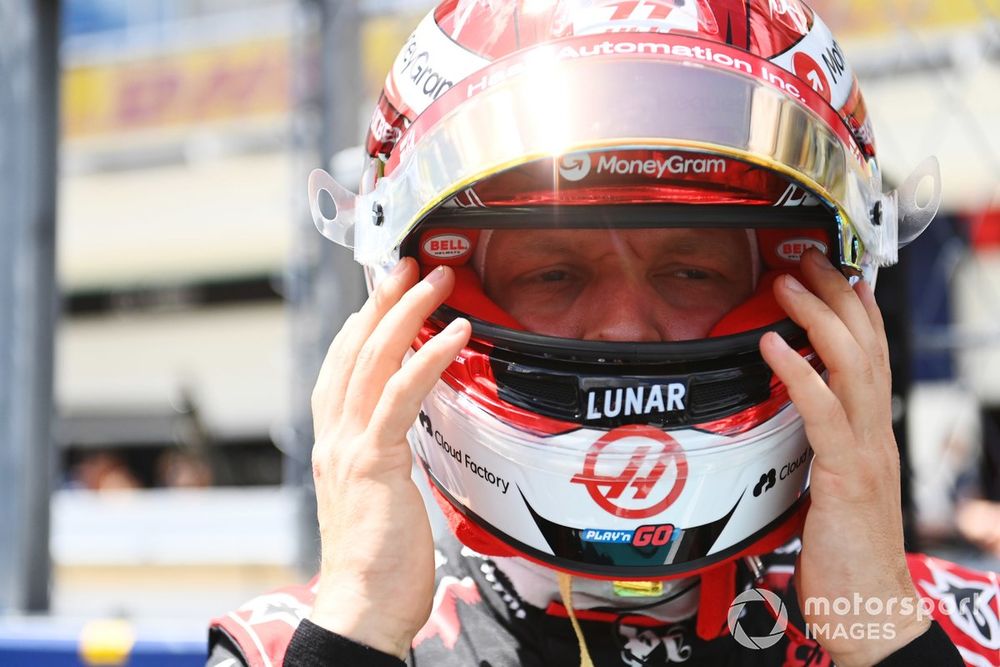
Magnussen is on the edge of picking up a race ban after his multiple penalties in Miami
Photo by: Mark Sutton / Motorsport Images
Three 10-second penalties for leaving the track and gaining an advantage, added to a five-second track limits penalty, equalled a grand total of the stewards’ ire at Magnussen (and 35 seconds added to his sprint race time, for those with extreme maths allergies). The Dane even admitted that he might have overdone his defence against Lewis Hamilton in Saturday’s 19-lap event, but he wasn’t quite done with his penalty gathering.
Perhaps sensing that a few more stamps on his FIA card might entitle him to a free coffee, Magnussen buzzed around Sargeant and attempted to pass the American in the opening corners on the 28th lap. Instead, he hooked Sargeant’s right-rear wheel with his left-front and posted the Floridian into the wall to produce the safety car.
PLUS: Miami Grand Prix Driver Ratings
That was worth another 10-second penalty, but that wasn’t quite it – Magnussen then took to the pitlane under the safety car but did not change his tyres, which comes with a 20-second penalty for the presumed potential disruption to others. Post-Miami, Magnussen now has 10 points on his license – another two will result in a race ban.
“It wasn’t a good day, again,” Magnussen mused. “Hopefully I can get some clarity on things going forward.”
10. Antonelli primed for F1 chance as FIA receives superlicence request
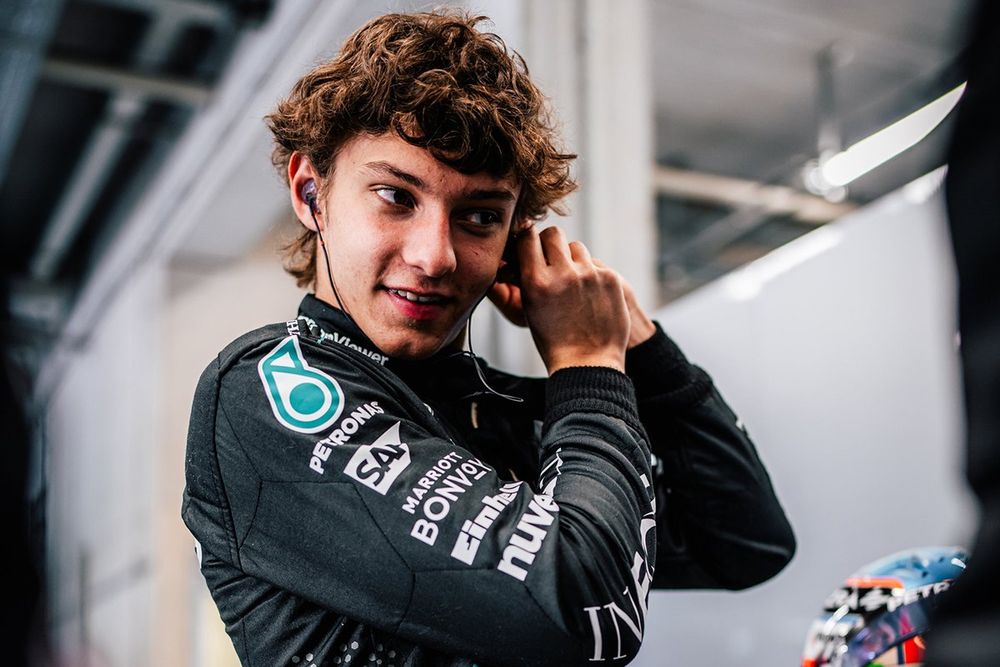
Is Antonelli being primed for an F1 debut at the earliest opportunity?
When Verstappen made his prodigious entrance into the F1 arena as a race driver at the grand old age of 17, the FIA tightened up its superlicence requirements to stop drivers skipping rungs on its carefully curated ladder to F1. It also upped the minimum age limit needed to hold a superlicence to 18.
It emerged over the Miami weekend that the FIA had received a request to grant Mercedes young driver Andrea Kimi Antonelli a superlicence, even though he only reaches 18 in August. It may be that this could simply ensure that the Italian can participate in FP1 sessions at some point in 2024, but has led to speculation that Williams might be angling for a replacement for Sargeant should the Fort Lauderdale-born driver continue to struggle.
Antonelli has been granted test days in old Mercedes machinery, as the Brackley squad attempts to give him ample preparation for a future F1 opportunity, but James Vowles says that Williams is committed to sticking with Sargeant.
“I know nothing about what’s going on with the Mercedes tests right now,” said Vowles. “We are looking, as everyone else is, for where we want to be on driver line-up for next year. And we have our own young driver programme.
“Logan has to earn his seat and at the moment, he has some tough targets where he has to get much closer to Alex. But there is nothing on the radar at the moment for replacing him.”
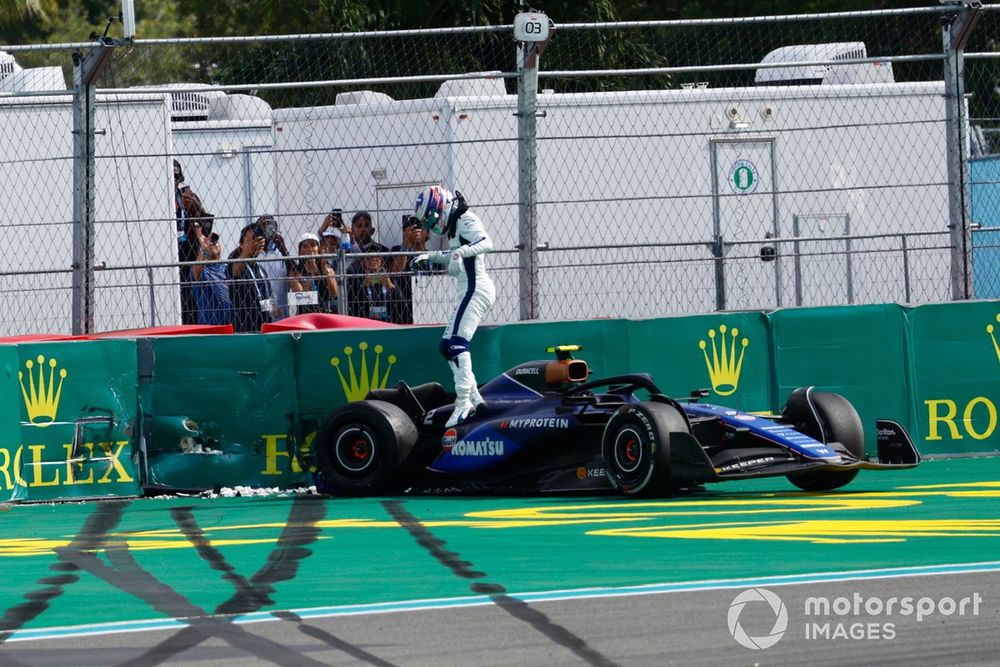
Sargeant remains under pressure to perform at Williams
Photo by: Sam Bloxham / Motorsport Images

